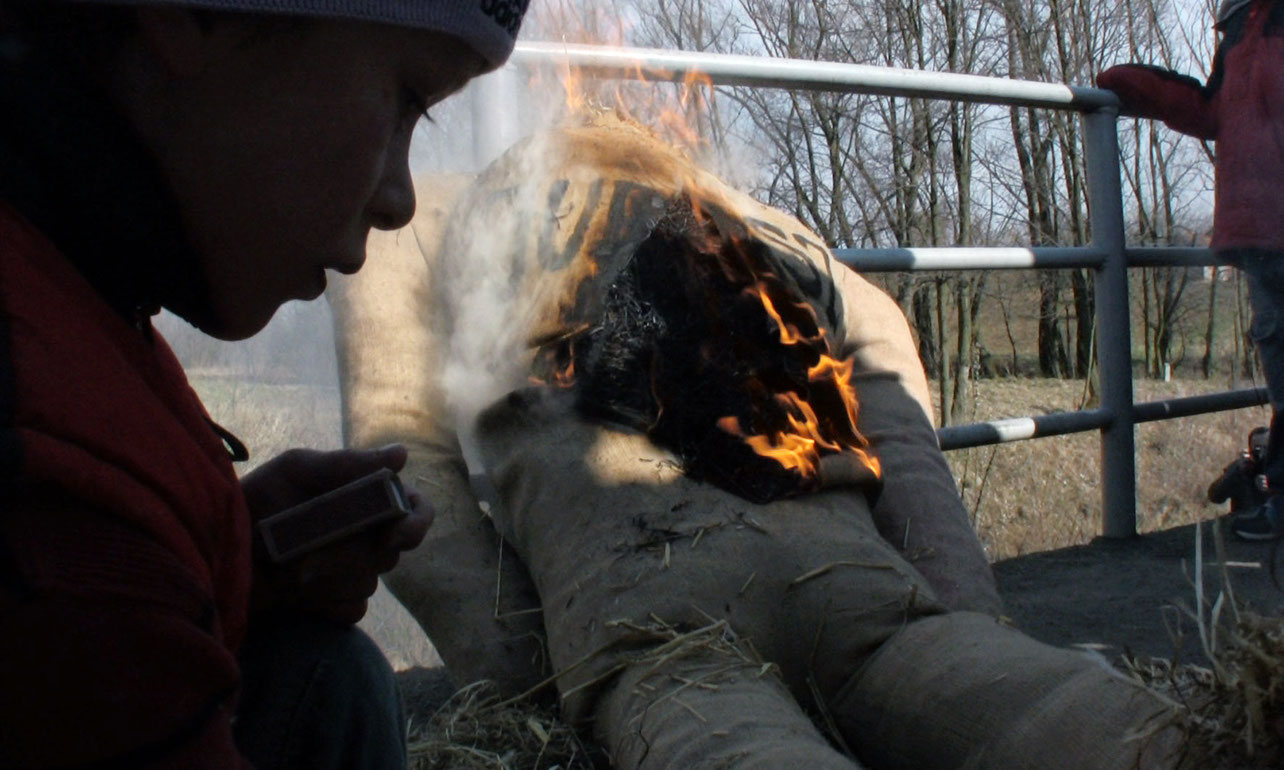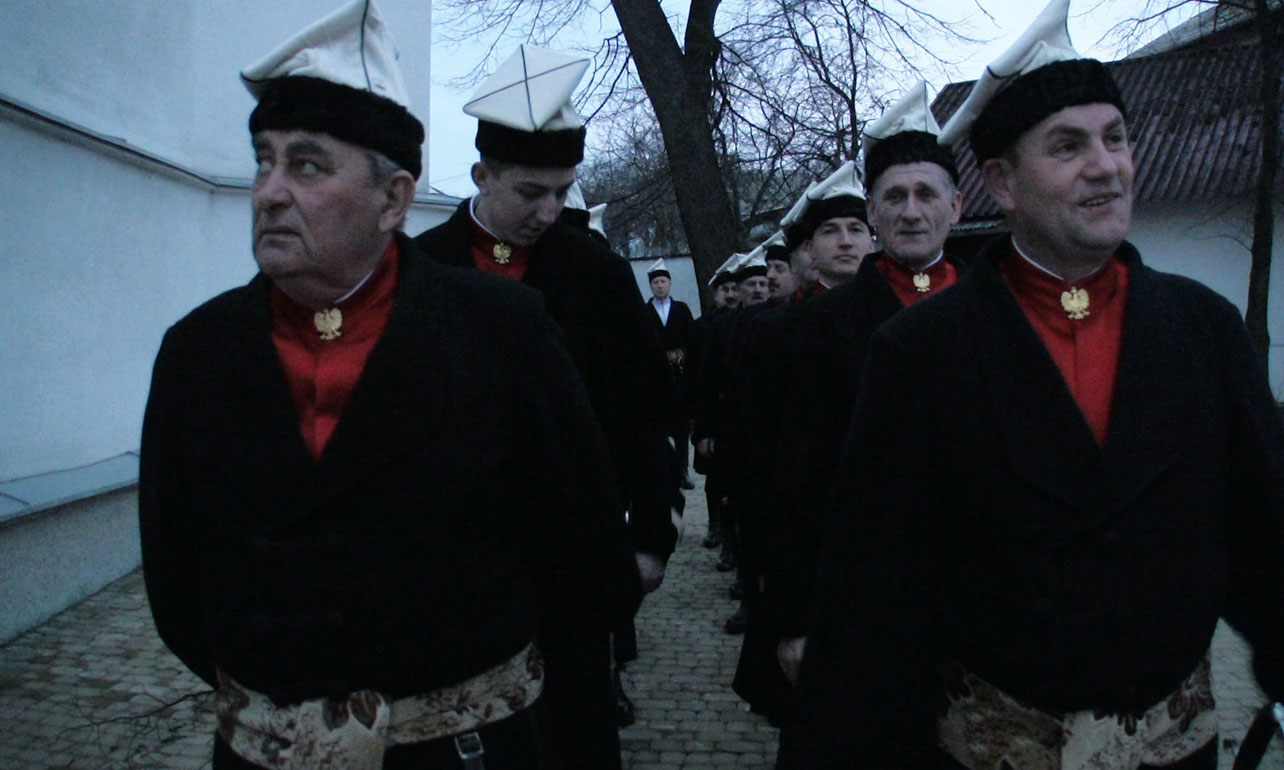The Passion According to the Polish Community of Pruchnik
"It was like this: 1200 Poles, 800 Jews and 400 people of other nationalities. The mayor was Jewish. The judge was Jewish. The doctor was Jewish.... All key positions were filled by Jews. Everybody else was rabble." This openly anti-Semitic statement is the first thing to be heard in Andreas Horvath and Monika Muskala´s The Passion according to the Polish Community of Pruchnik. As it is spoken by several different people in a voice-over, the picture shows a farmhouse at night, followed by the farm´s cowshed and barn. In the latter, the men who apparently did the talking make a larger-than-life straw figure of a man, which is given the name Judas when finished.
This takes place in Pruchnik, a small village in southeastern Poland, on the night before Good Friday, 2008. Although straw figures are burned in many Polish villages in the spring, to drive away winter, this heathen custom seems to have been given Christian symbols in Pruchnik alone. The men in the village don´t know when this happened, and they aren´t willing to believe that Christian anti-Judaism was the medieval predecessor of anti-Semitism: This has nothing to do with the Jews, this is only about Judas´ betrayal of Jesus. To make amends for this event, the effigy is hung up, dragged through the village, beaten with rods, and then set afire before being thrown into the water. The betrayal has been avenged by the hour of the Savior´s death.
Whoever thinks that The Passion is solely about observing this ritual to reveal the heathen roots of folk Catholicism is mistaken. In its final third, The Passion shows a Catholic ceremony in harmony with the spirit of the ritual: Men armed with swords guard Christ´s tomb in a church. Who would dare to steal the Savior´s body?
(Vrääth Öhner)
At the beginning of most of my films there is the irrational, something I don´t understand. The starting point of this film was the question why the residents of a small town in Poland would take pleasure in the annual excessive lynching of an oversized Judas puppet. The scenes of the agitated mob recall harrowing news images that have been imprinted in our collective memory ever since Somalia or Iraq.
The mood of the film oscillates between playful and serious. Don´t the four dark figures at the beginning with their infantile jokes resemble children rather than grown-ups? And the children that so eagerly and violently beat on the puppet - are they merely innocently at play?
The guarding of the grave of Jesus until resurrection at the end of the film is tightly connected to the preceding events. Obviously the one cannot exist without the other: we need to destroy the bogeyman Judas first, in order to augment our respect and love for Jesus. I am not sure anti-semitism is the main problem here. Most villagers probably have other motives to participate. I think a far more universal logic is responsible for the unfolding events: hypocrisy and the thinking in stereotypes. Maybe this is the most disturbing aspect of this story.
(Andreas Horvath)
In the small town of Pruchnik in the southeastern part of Poland villagers gather every year on Good Friday to “punish” Judas for his betrayal of Jesus. A larger-than-life straw puppet with a hooked nose is dragged through town, beaten, decapitated, burnt and thrown in the river. The film explores the thin line between pagan and Christian rites while exposing the sometimes brutal and blatantly anti-semitic undercurrents of Christian practice.
(Synopsis)
The Passion according to the Polish Community of Pruchnik
2009
Austria
30 min



